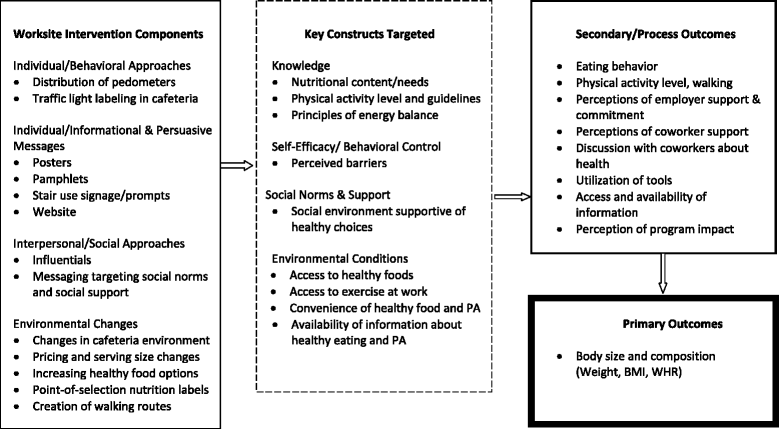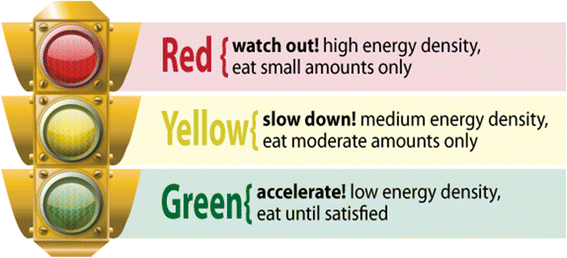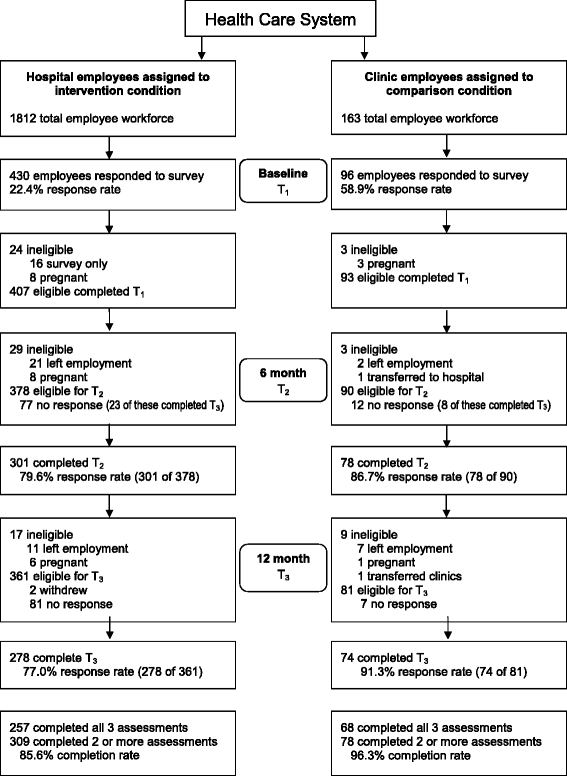Go!: results from a quasi-experimental obesity prevention trial with hospital employees
- PMID: 26893128
- PMCID: PMC4759772
- DOI: 10.1186/s12889-016-2828-0
Go!: results from a quasi-experimental obesity prevention trial with hospital employees
Abstract
Background: Worksite obesity prevention interventions using an ecological approach may hold promise for reducing typical weight gain. The purpose of this study was to examine the effectiveness of Go!, an innovative 12-month multi-component worksite obesity prevention intervention.
Methods: A quasi-experimental non-equivalent control group design was utilized; 407 eligible hospital employees (intervention arm) and 93 eligible clinic employees (comparison arm) participated. The intervention involved pedometer distribution, labeling of all foods in the worksite cafeteria and vending machines (with calories, step equivalent, and a traffic light based on energy density signaling recommended portion), persuasive messaging throughout the hospital, and the integration of influential employees to reinforce healthy social norms. Changes in weight, BMI, waist circumference, physical activity, and dietary behavior after 6 months and 1 year were primary outcomes. Secondary outcomes included knowledge, perceptions of employer commitment to employee health, availability of information about diet, exercise, and weight loss, perceptions of coworker support and frequency of health discussions with coworkers. A process evaluation was conducted as part of the study.
Results: Repeated measures ANCOVA indicated that neither group showed significant increases in weight, BMI, or waist circumference over 12 months. The intervention group showed a modest increase in physical activity in the form of walking, but decreases in fruit and vegetable servings and fiber intake. They also reported significant increases in knowledge, information, perceptions of employer commitment, and health discussions with peers. Employees expressed positive attitudes towards all components of the Go!
Conclusions: This low-intensity intervention was well-received by employees but had little effect on their weight over the course of 12 months. Such results are consistent with other worksite obesity prevention studies using ecological approaches. Implementing low-impact physical activity (e.g., walking, stair use) may be more readily incorporated into the worksite setting than more challenging behaviors of altering dietary habits and increasing more vigorous forms of physical activity.
Trial registration: This study was registered with clinicaltrials.gov (NCT01585480) on April 24, 2012.
Figures
References
-
- Bureau of Labor Statistics. Economic news release: American time use survey – 2013 results. http://www.bls.gov/news.release/atus.nr0.htm. Accessed 31 July 2014.
-
- Anderson LM, Quinn TA, Glanz K, Ramirez G, Kahwati LC, Johnson DB, et al. The effectiveness of worksite nutrition and physical activity interventions for controlling employee overweight and obesity: a systematic review. Am J Prev Med. 2009;37(4):340–57. doi: 10.1016/j.amepre.2009.07.003. - DOI - PubMed
Publication types
MeSH terms
Associated data
LinkOut - more resources
Full Text Sources
Other Literature Sources
Medical
Miscellaneous




